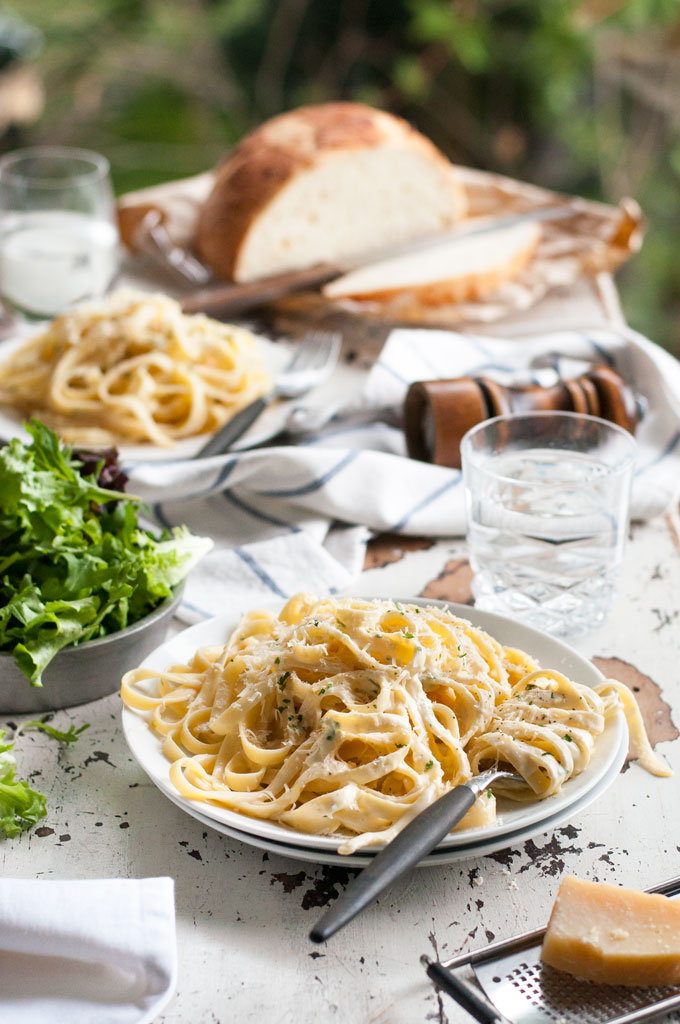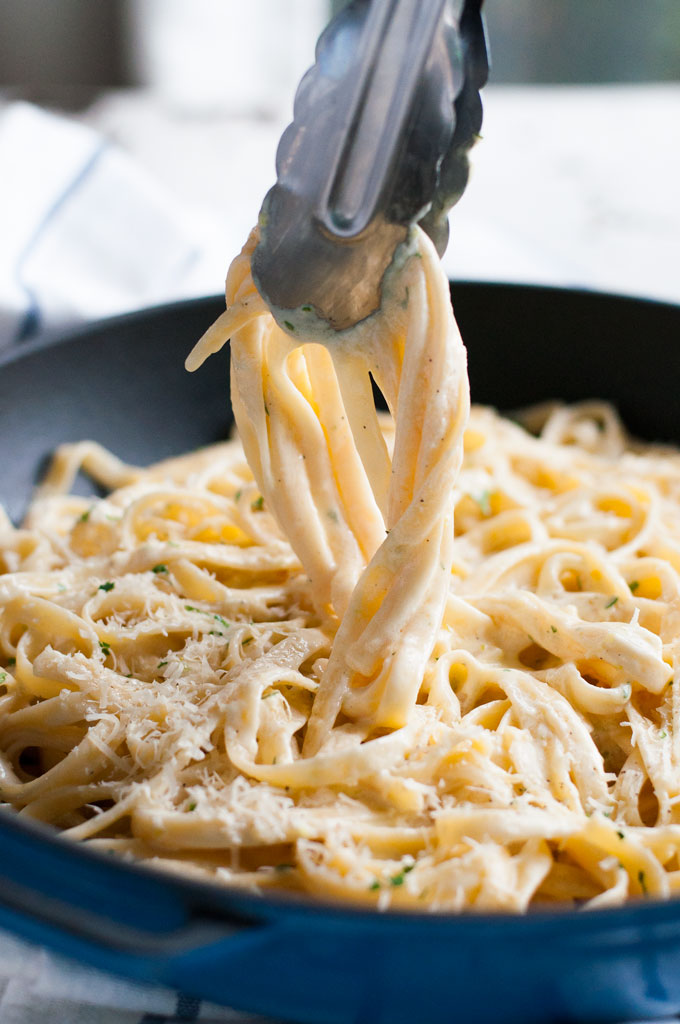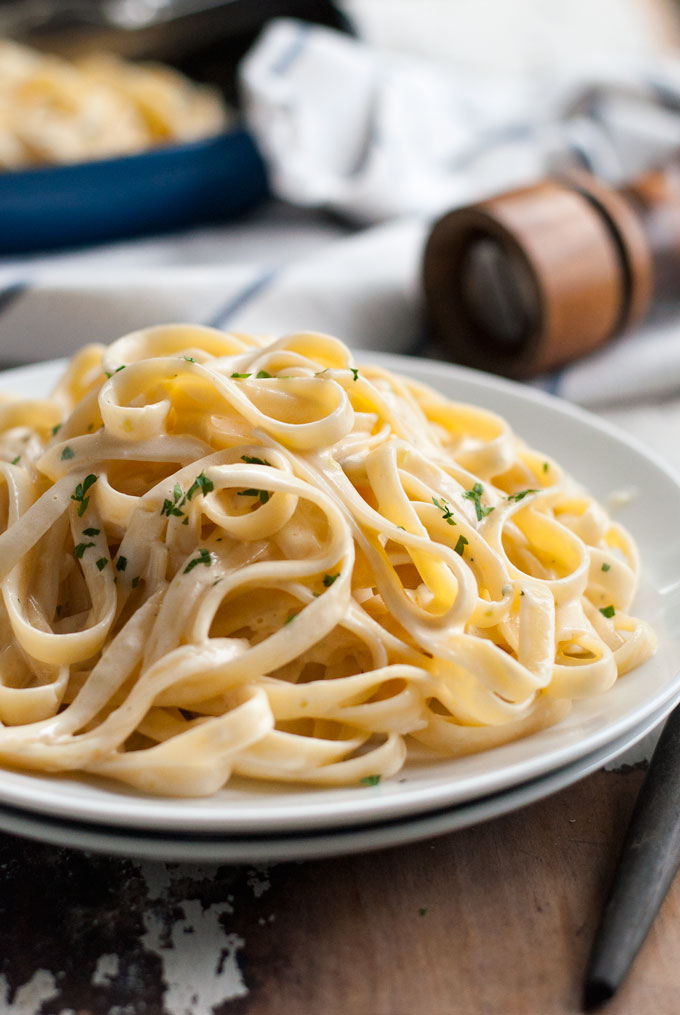Fettucine Alfredo has a Special Taste Like None Other..

Fettuccine Alfredo is a plate of decadent, creamy richness that always leaves you feeling more than satisfied, but also bears some guilt and some pre-scheduling of your next aerobics or spin class. Aren't I right? But...guess what? This recipe is only 420 calories, doesn't lack any flavor or rich yumminess and won't cause you to balloon up or up your jean size. I promise!
It is important to enjoy what you eat and of course enjoy what you are cooking. Food cooked with happiness and love is food that is memorable, evokes feeling or sensation, and therefore, is food that is good for you. Besides, food is there to be enjoyed, aren't I right? I believe it is all about portioning, using the right ingredients, and balancing everything out with an overall healthy, active, lifestyle.
Being a food geek, I had to research more about this ever-so-delicious dish and it turns out that the dish has quite a lengthy history in Rome. Ever since the 15th century, Romans have been eating pasta with a simple light cheese sauce made directly in the pot with the pasta. Fettuccine alla Romana, made by tossing fresh fettuccine with Parmesan cheese is Alfredo's most direct ancestor. Spaghetti with cacio e pepe�a late night drunk-food staple for Romans made by tossing spaghetti with Pecorino Romano, black pepper, and a touch of pasta water�is a very close cousin.
Now, don't get me wrong�I'm not a health nut or calorie counter. But let's face it: the feeling you get after downing a bowl of creamy, cheesy Fettuccine Alfredo ain't the best. Wouldn't it be great to have a quick and easy version that has all the flavor of these cream-packed renditions, but with a cleaner flavor that doesn't leave you in a food coma? Well, here it is! You're welcome!
Pasta is a staple food in traditional Italian cooking, with the first origins of the popular food dating back to 1154 in Sicily. Pasta is used to refer to a wide variety of pasta dishes. Most dried pasta varieties are commercially produced and sold throughout the world. Fresh pasta was traditionally produced by hand, sometimes with the help of simple machines, but today with a move toward more traditional types of cooking many types of fresh pasta are also commercially produced and available in grocery stores. There are about 310 different types of pasta! These pastas are available in both dried and fresh pasta in a number of shapes and varieties. In Italy the names of the specific pasta shapes or types can often vary with each local region. Originally pasta was eaten plain, so the idea of using tomato sauce to give it flavor was revolutionary. Pasta was known to be eaten with the hands as only the wealthy could afford eating utensils. The way people eat pasta has come a long way as it was once a small, simple food, but today it is often eaten in larger portions and as part of complex,and sophisticated dishes and loved around the world.
Learn MORE / Get RECIPE at Recipe Tin Eats
To help with slow website load, we have put all photos for this article here: View photo gallery.









